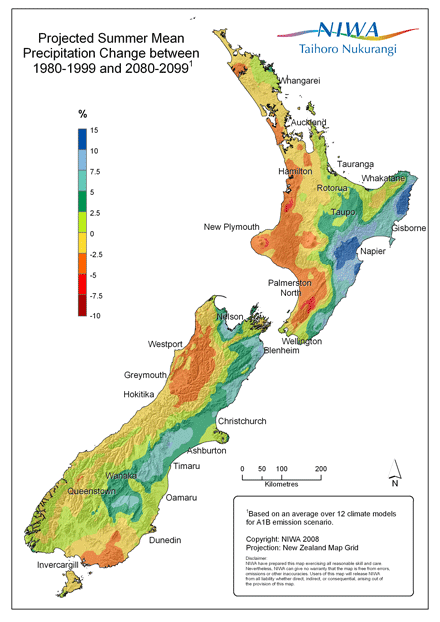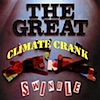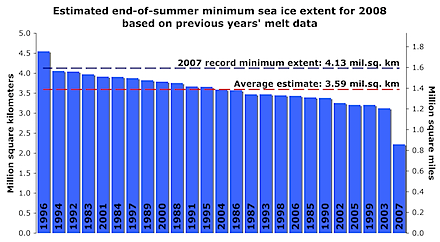 Hot off the presses: NIWA’s latest projections for the climate of New Zealand over the coming century were released this morning as part of a new MfE guidance manual (here, PDF) for local government. Based on IPCC modelling for AR3 and AR4 downscaled to local climate, plus early work with NIWA’s new regional climate model, the picture is broadly similar to earlier results: modest warming everywhere, a reduction in frosts and more hot days, increased frequency of droughts and heavy rainfall events, and steady sea level rise. NIWA’s press release is available at Scoop (link to full .doc here). At the same time the Ministry of Agriculture has released its latest EcoClimate report, which takes the new projections and assesses their impact on key agricultural sectors. I’ll be picking through these reports, and the associated coastal hazards guidance over the next few days, but here are a few of the headlines:
Hot off the presses: NIWA’s latest projections for the climate of New Zealand over the coming century were released this morning as part of a new MfE guidance manual (here, PDF) for local government. Based on IPCC modelling for AR3 and AR4 downscaled to local climate, plus early work with NIWA’s new regional climate model, the picture is broadly similar to earlier results: modest warming everywhere, a reduction in frosts and more hot days, increased frequency of droughts and heavy rainfall events, and steady sea level rise. NIWA’s press release is available at Scoop (link to full .doc here). At the same time the Ministry of Agriculture has released its latest EcoClimate report, which takes the new projections and assesses their impact on key agricultural sectors. I’ll be picking through these reports, and the associated coastal hazards guidance over the next few days, but here are a few of the headlines:
Tag: sea
Swell maps, and other stories
 Time for another round up of climate-related news. Hot on the web today (for cartophiles, at least) is that Google Earth has gained a swag of new climate change related information, the result of collaboration between Google, the UK Government, the Met Office Hadley Centre and the British Antarctic Survey. The Climate Change in Our World project, launched at the Google Zeitgeist conference by UK PM Gordon Brown offers two new layers based on Hadley Centre predictions, BAS research in Antarctica, and impacts worldwide. You can animate global temperature changes, visit crumbling ice shelves, and view climate change impacts around the world. Google Earth blog here, download .kmz files here. Hours of geographical fun are guaranteed.
Time for another round up of climate-related news. Hot on the web today (for cartophiles, at least) is that Google Earth has gained a swag of new climate change related information, the result of collaboration between Google, the UK Government, the Met Office Hadley Centre and the British Antarctic Survey. The Climate Change in Our World project, launched at the Google Zeitgeist conference by UK PM Gordon Brown offers two new layers based on Hadley Centre predictions, BAS research in Antarctica, and impacts worldwide. You can animate global temperature changes, visit crumbling ice shelves, and view climate change impacts around the world. Google Earth blog here, download .kmz files here. Hours of geographical fun are guaranteed.
- A major new study finds strong links between recent climate change and large scale changes in the planet’s natural systems. It’s our fault, in other words [Nature (behind a paywall), BBC, Science Daily News, Guardian]. Lead author Cynthia Rosenzweig from the Goddard Institute for Space Studies in New York told the BBC “…look at all the effects this relatively low amount of warming has had. It reveals the sensitivity to relatively low amounts of warming in many physical and biological systems.” A key point for anyone who thinks that “only a few degrees” won’t make much difference.
- The growing number of humans on the planet is having a dramatic impact on wildlife populations, according to the Living Planet Index compiled by WWF and the Zoological Society of London. Populations of land-based species have fallen by 25%, marine by 28% and freshwater by 29% since 1970. We’re losing about 1% of all other species every year, and one of the “great extinction episodes” in the Earth’s history is under way, the index finds. [BBC, Independent, Guardian, Telegraph].
- More bad wildlife news: the 2008 Bird Red List “warns that long-term droughts and extreme weather puts additional stress on key habitats,” according to the BBC. “The assessment lists 1,226 species as threatened with extinction – one-in-eight of all bird species.“
- RNZ National’s science programme Our Changing World is always worth a listen, but last week’s (15/5/08) was a cracker. Ice core expert Richard Alley on Antarctica’s future, an update on the University of Waikato’s UltraCommuter EV, and one of the most cogent overviews of biofuel options I’ve ever heard from Doug Cameron, Chief Scientific Officer of Khosla Ventures, the Californian clean tech company. If those streaming links expire, podcast versions are available here, and the programme’s archive is here.
- Wired reports on Renault’s plans to make EVs for Israel, and then the world, and EcoGeek discovers that Audi intends to have EVs in production in ten years. They might have to hurry… (my son announced yesterday that “one day’ he intends to own a Porsche. I’m willing to bet that by the time he can afford one (if ever) it’ll be a hybrid or EV).
- #35 with a bullet! Tim Selwyn’s latest NZ blogosphere survey (at Tumeke!) finds that Hot Topic has moved up from #68 in February to #35 in March/April. I’d like to thank The Listener for making it all possible… 😉
Never mind the bollocks…
 Occasionally my rural postie (hi Jenny!) brings me something more interesting than bills. Last week, I received a package from Sky TV. Packed in a brown paper bag that looks remarkably like an airline sick bag, sealed with a “Warning: content may offend” sticker, was a DVD copy of The Great Global Warming Swindle, the sceptic “documentary” that caused a furore* when first shown on Channel 4 in the UK last year, and which Prime plan to show here in the next few weeks. Full marks for creative PR, but a definite fail for factual inaccuracies in the promotional leaflet they sent out (copy here). Apparently “the theory that man-made emissions of CO2 have a discernable (sic) effect on climate lacks robust scientific evidence”, “there’s overwhelming evidence indicating that it’s solar activity that determines temperature”, and “everything you’ve ever been told about Global Warming is probably untrue”. Sorry Prime, none of those statements are true, and the Advertising Standards Authority might have a thing or two to say about that…
Occasionally my rural postie (hi Jenny!) brings me something more interesting than bills. Last week, I received a package from Sky TV. Packed in a brown paper bag that looks remarkably like an airline sick bag, sealed with a “Warning: content may offend” sticker, was a DVD copy of The Great Global Warming Swindle, the sceptic “documentary” that caused a furore* when first shown on Channel 4 in the UK last year, and which Prime plan to show here in the next few weeks. Full marks for creative PR, but a definite fail for factual inaccuracies in the promotional leaflet they sent out (copy here). Apparently “the theory that man-made emissions of CO2 have a discernable (sic) effect on climate lacks robust scientific evidence”, “there’s overwhelming evidence indicating that it’s solar activity that determines temperature”, and “everything you’ve ever been told about Global Warming is probably untrue”. Sorry Prime, none of those statements are true, and the Advertising Standards Authority might have a thing or two to say about that…
The Great Global Warming Swindle is not a documentary, it’s a one-sided piece of propaganda made on behalf of climate sceptics that alleges that the world’s climate scientists are lying about global warming. It contains glaring inaccuracies, distortions of fact, and misrepresentations of the real state of climate science (and yes, I have watched it). It’s been the subject of 250 complaints in the UK (a ruling is expected from OFCOM, the UK broadcasting standards body, any day now), and the version being shown here still contains factual errors and distortions that were drawn to the film-maker’s attention at the time TGGWS was shown in Australia (July last year). It’s worth taking a moment to watch ABC’s science correspondent Tony Jones’ interview with Martin Durkin, the film’s producer (here and here). Neither of the two graphs Jones mentions have been corrected in the version Prime apparently plans to show in NZ. Nor have any of the serious scientific errors pointed out by Aussie scientists last year (Jones, D., Watkins, A., Braganza, K., and Coughlan, M. (2007), “The Great Global Warming Swindleâ€: a critique. Bull. Aust. Meteor. Ocean. Soc., 20(3) 63-72 – available as html, or PDF), or summarised nicely by Bob Ward at Climate of Denial. The Australian Science Media Centre also has a good resource page on the film. It remains a fundamentally flawed work that fails to meet any reasonable standard of accuracy.
Prime are clearly hoping to stir up a bit of controversy and boost their audience. They plan to show a “debate” following the screening, pitting cranks against scientists. By doing that they’re playing straight out of the sceptic playbook. They’re “teaching the debate”, when the debate has long since moved on to more interesting and relevant stuff. And they’re poisoning the well of public debate by showing material that’s been repeatedly demonstrated to be wrong. Prime should insist that Durkin corrects all the errors before the film is shown here, and identify it clearly as one man’s opinion, not a factual documentary. To provide some semblance of balance, they should drop the idea of a debate and replace it with a counterpoint from NZ’s climate scientists.
Freedom of speech should not extend to freedom to lie. The climate cranks want to make a political argument about climate policy – do nothing, or not very much, and then only slowly – but that is a political not a scientific argument. I’m happy to defend their right to hold their political opinions, but making up evidence in support of their arguments is simply wrong.
* Good summary of the row, and comprehensive links, at medialens.
What’s going on?
 The Heartland Institute’s inclusion of five New Zealand scientists in a list of “500 Scientists with Documented Doubts of Man-Made Global Warming Scares” (title has since changed to “500 Scientists Whose Research Contradicts Man-Made Global Warming Scares” – PDF here) is even more bogus than I originally thought.
The Heartland Institute’s inclusion of five New Zealand scientists in a list of “500 Scientists with Documented Doubts of Man-Made Global Warming Scares” (title has since changed to “500 Scientists Whose Research Contradicts Man-Made Global Warming Scares” – PDF here) is even more bogus than I originally thought.
The list is the product of the fertile imaginations of Dennis Avery and Fred Singer, and is “derived primarily from the citations” in their recent book Unstoppable Global Warming—Every 1,500 Years. They say in the introduction:
The following list includes more than 500 qualified researchers, their home institutions, and the peer-reviewed studies they have published in professional journals providing historic and/or physical proxy evidence that:
1) Most of the recent global warming has been caused by a long, moderate, natural cycle rather than by the burning of fossil fuels… [There are six more items, but you can read them for yourself]
So how did Jim get in there? He sent me a copy of the offending paper – Southwest Pacific temperatures: trends in maximum and minimum temperatures, Atmospheric Research 37 (1995) (copy here). It’s interesting enough, but not exactly earth-shattering. As the title suggests, it uses a then new data set for SW Pacific temperatures and looks for changes in maximum and minimum daily temperatures in the region. The paper states “Increases in concentrations of greenhouse gases and changes in cloudiness could be plausible mechanisms for the overall increase in both daily maximum and minimum temperatures.”
Avery and Singer list the paper in their first section, “studies finding evidence of the climate cycle”. Now I’ve read the paper in some detail, and I can’t find any reference to a 1,500 year cycle, or indeed a cycle of any kind. Perhaps Avery & Singer included it because Jim rides a bicycle?
In other words, the use of Salinger’s paper to support Avery & Singer’s hypothesis is entirely bogus. It’s scientific fraud, unethical, and just another example of how Heartland are prepared to encourage people to distort the truth in support of their political objectives. I hope Heartland’s apologists in New Zealand, the NZ Climate “Science” Coalition will share my outrage, and demand that Bast and co remove Salinger from the list immediately.
But I’m not holding my breath.
Sugar coated iceberg
 Prognostications on the fate of the Arctic sea ice this boreal summer are coming in thick and fast. The National Snow and Ice Data Centre in the US has updated its summer news page with the latest data and some projections of what might happen:
Prognostications on the fate of the Arctic sea ice this boreal summer are coming in thick and fast. The National Snow and Ice Data Centre in the US has updated its summer news page with the latest data and some projections of what might happen:
Spring has arrived in the Arctic. After peaking at 15.21 million square kilometers (5.87 million square miles) in the second week of March, Arctic sea ice extent has declined through the month of April. April extent has not fallen below the lowest April extent on record, but it is still below the long-term average. Taken together, an assessment of the available evidence, detailed below, points to another extreme September sea ice minimum. Could the North Pole be ice free this melt season? Given that this region is currently covered with first-year ice, that seems quite possible.
Most striking are the estimates of this summer’s likely minimum based on the melting rates observed over the last 25 years.

“To avoid beating the September 2007 record low, more than 50% of this year’s first-year ice would have to survive; this has only happened once in the last 25 years, in 1996.”
Meanwhile, Andy Revkin at the New York Times has been asking sea ice researchers for their views. You can read their replies in the comments to his post. A number of well-known names are backing a new record, including BIll Chapman, the researcher responsible for the excellent Cryosphere Today site (I want to get an iPhone so that I can try out the special graphics CT provides), who writes:
The two wild cards remaining would be (1) how thick is this first-year ice and (2) will it be warm enough to melt the first-year ice this summer? Since temperatures over the central Arctic were normal to above normal this past winter and spring, I don’t think the thickness will be too great. The key will be June temperatures and cloud cover in the central Arctic. Given relatively clear conditions and an early to average start to the melt of the central Arctic, the albedo will lower and the process will be in motion to easily melt that first year ice. In fact, the only thing that could prevent a record would be a colder than average summer – especially early summer. Given recent history and our penchant for burning fossil fuels, I’d consider this somewhat unlikely.
I say the odds favor a new NH record minimum – put my money there.
My money’s already there… Good to know I’m backing the form horse, even if I would rather lose.
